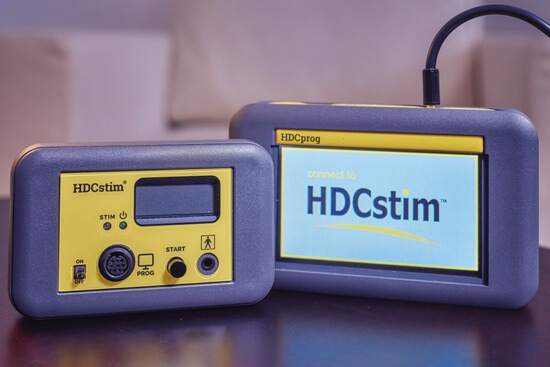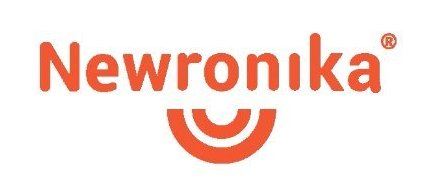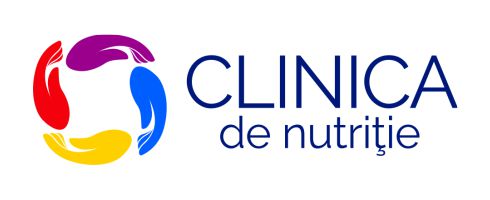HDCStim – The TECHNOLOGY THAT REDUCES TREATMENT PERIOD AND MEDICATION IN DEPRESSION TREATMENT
What would you think if one day the medical prescription for severe depression could sound something like this:
“In the comfort of your own home, apply the HDCStim device (transcranial electrical stimulation device) to your scalp a few times a week. For 20 minutes, a low-intensity electric current will be delivered to your brain.”

HDCStim is a specially designed device for treating depression, chronic pain, post-stroke sequelae, and cravings. It is the product that brings transcranial electrical stimulation into the clinical setting, in a medical office.

Transcranial electrical stimulation is seen as a novel and exceptional treatment because it is accessible, administered with a portable device, and easy to use. The treatment is EFFECTIVE, SAFE, NON-INVASIVE, and PAINLESS, classified as a medical device according to EU and international regulations.
Depression and Transcranial Electrical Stimulation
Depression, even in the most severe cases, can be successfully treated. The earlier the treatment is initiated, the more effective it is.
Depression is typically treated with antidepressant medication, psychotherapy, or a combination of both. The treatment for depression is long-term and can last from several months to a few years. Antidepressants take time to take effect, usually around 2-3 weeks, and need to be continuously administered for an extended period. Of course, in addition to their beneficial effects, antidepressants, like any other medication, can have unwanted side effects.

WHAT IS HDCStim AND WHAT BENEFITS IT HAS IN THE TREATMENT OF DEPRESSION
Transcranial electrical stimulation (tDCS) is a non-invasive treatment that has been extensively studied in the past 10 years and offers numerous benefits for the human body. It is based on the simple principle of direct current polarization, specifically the application of low-intensity electric current directly to the scalp. The electric current passes through the scalp without causing pain and influences the neuronal activity of specific areas in the brain, modulating the spontaneous neural discharge (either stimulating or inhibiting neuronal activity) at that level.
In recent years, a new method for alleviating depressive symptoms has been developed: Transcranial Electrical Stimulation (tDCS).
This new method offers several advantages that translate into benefits for the user:
NON-INVASIVE
ACCESSIBLE
EASY TO USE
It is user-friendly, and the portable device can be used at home* in a familiar environment, within the comfort and privacy of your own home.
*only under the recommendation of a doctor
This is what HDCStim brings as an additional benefit in depression treatment:
Transcranial electrical stimulation (tDCS) can be used as monotherapy for depression or in combination with antidepressant medication.

WHAT HDCStim ACTUALLY DOES:
✔️ shortens the duration of treatment with antidepressants
✔️ decreases the doses of antidepressants used
✔️ brings a faster antidepressant response
✔️ relieves symptoms of depression
✔️ decreases anxiety, restlessness, somatic symptoms
✔️ improves cognition (memory, attention) which is impaired in depression
Conditions for which HDCStim is used:
Depending on the targeted brain area, electrical stimulation can be used for the treatment of various psychiatric or neurological conditions. Research on transcranial electrical stimulation has recently expanded to safely and effectively treat the following conditions:
- Depression
- Chronic pain: treatment-resistant chronic fibromyalgia, spinal conditions, migraines, trigeminal neuralgia, post-stroke pain syndrome, neuropathic pain, central pain following spinal cord injuries.
- Post-stroke recovery: acute, subacute, and chronic aphasia; subacute post-stroke dysphagia, other post-stroke sequelae.
- Cravings: nicotine addiction, compulsive eating, alcohol addiction.
Stages in the use of HDCStim:
To benefit from transcranial electrical stimulation treatment for depression, an initial psychiatric consultation is necessary to determine the severity of the condition and the appropriate treatment modalities for each patient (medication and/or psychotherapy and/or tDCS). Subsequent psychiatric consultations are required to monitor the treatment.
Transcranial electrical stimulation sessions last 20 minutes per day for 2-3 weeks.
Subsequently, maintenance transcranial electrical stimulation treatment is necessary as directed by the doctor and based on the treatment response.

Medical Details
There are different mechanisms of action underlying the effects of transcranial electrical stimulation:
- Effects induced by changes in transmembrane conductivity and alterations in intracellular ion and calcium concentrations.
- Synaptic modulation of dopamine and glutamate receptors.
- Effects resulting from non-synaptic modulation of membrane potential (presynaptic, postsynaptic, and axonal fibers).

Newronika – Manufacturer of HDCStim
HDCStim is developed by Newronika, a spin-off company of one of Italy’s largest national research hospitals, Fondazione IRCCS Ospedale Maggiore Cà Granda Policlinico in Milan, and one of Italy’s largest universities, Università degli Studi di Milano, which are shareholders of the company.
Prof. Alberto Priori (Professor and Medical Doctor specialized in Neurology), one of the company’s founders, first described the method of transcranial direct current stimulation (tDCS) in 1998, a treatment that is now widely known and extensively researched with numerous scientific publications. Together with his team, he developed innovative methods of neurostimulation of the central nervous system, which are protected by international patents.
HDCStim is classified as a medical device according to EU regulations, falling under the category of Class IIa medical devices, CMDCAS Class II, GMP Class III. It is also approved as a medical device for home use according to IEC 60601-1-11 standards, but only with the recommendation of a specialist doctor.
Partners
Transcranial Electrical Stimulation Appointment Request Form – HDCstim
Please fill in the details below to request an appointment. A member of the Med Anima team will contact you shortly after receiving the form to set up all the details of the appointment together.
This website is protected by reCAPTCHA and Google’s Privacy Policy; Google’s Terms and Conditions apply.
Appointments in IAȘI:
Appointments in TIMIȘOARA:
Contact Iași:
Str. Străpungere Silvestru nr. 60, bl. CL11, sc. B, ground floor, Iași, county: Iași
Contact Belcești:
com. Belcești, B entrance, Bl. 4, county: Iași
Contact Timișoara:
Str. Simion Bărnuțiu nr. 34, Timișoara, county: Timiș
Email:
Social Media:
Our Services
TRANSCRANIAL MAGNETIC STIMULATION THERAPY
Learn more
Computer Assisted Cognitive Stimulation Therapy
Learn more
Treatment of Depression with Transcranial Electrical Stimulation
Learn more
Psychiatry consultations
Learn more
Psychiatry consultations - Online
Learn more
Psihiatrie pediatrică
Mai multe informații
Psihiatrie pediatrică - Online
Mai multe informații
Psychotherapy - Online
Learn more
Neurologie
Mai multe informații
DNA Mind Genetic Test
Learn more
GENETIC TESTING FOR OPTIMIZING THE TREATMENT OF MENTAL ILLNESSES
Learn more
Virtual reality therapy
Learn more
ALZHEIMER Dementia – Alternative Therapies
Learn more
Memory disorders – Diagnosis and treatment
Learn more
Sleep monitoring with the Act Trust Actigraphy device
Learn more
Clinical psychology and psychodiagnosis
Learn more
Counseling and psychotherapy
Learn more




